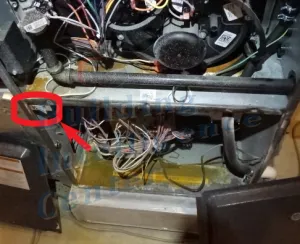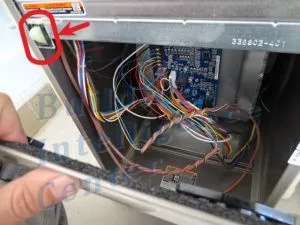Additional Tips for Determining the age of HVAC system or Water Heater
There are instances where the serial number may be missing or not legible, or the date code was simply not encoded within the serial number of the HAVC system or water heater. This is especially true of very old systems.
Below we have compiled some helpful information to help you arrive at an estimated year range or era of manufacture.
ANSI or CSA Standards
ANSI or CSA standards are revised approximately every 4-6 yearsMost manufacturers today are required to include the regulatory compliance standard on the data tag. For the U.S. this compliance standard is typically from the American National Standards Institute (ANSI or ANS). For Canada, a common standard compliance is through the Canada Standards Association Group (CSA). Many times both standards are listed. Regardless, the specific standard will normally be listed on the data tag/plate and followed by the YEAR of the last revision (often the year is placed in parenthesis or follows the hyphen after the specific standard number). As these standards are revised or renewed approximately every 4 to 6 years, one can reasonably estimate the year of manufacture within 4-6 years from (after) the standards date.
For Example… A Bradford White brand water heater (as do many other brands) will often list both the ANSI and CSA compliance standards on the data plate as such: ANSI Z21.10.1b-2006 * CSA 4.1b-2006
For ANSI:
“Z21.10.1b” is the specific ANSI standard the water heater complies with. The numbers following the standard “-2006” are the year of the standard revision.
For CSA:
“4.1b” is the specific CSA standard the water heater complies with. The numbers following the standard “-2006” are the year of the standard revision.
In both instances, this particular water heater cannot be any older than 2006 or year of the standard revision, and likely is not any newer than 2010-2012 (4-6 years from the standard revision year the unit complies with).
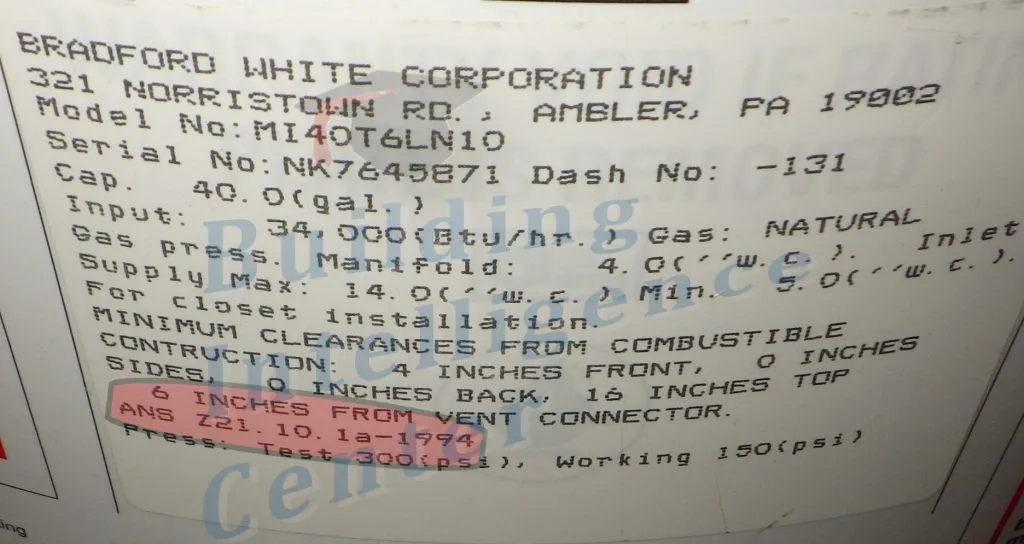
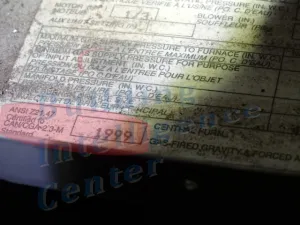
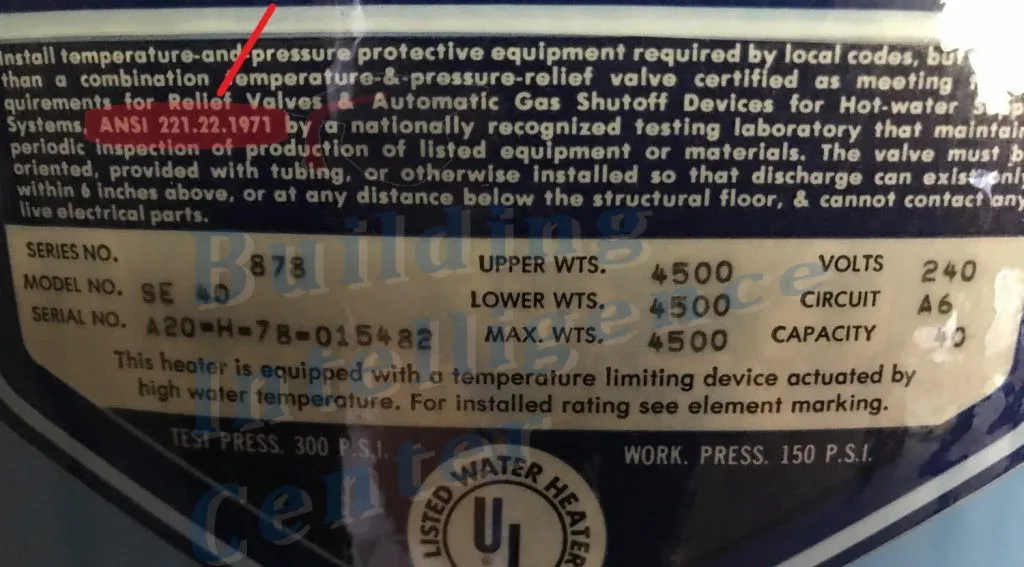
Gas Control/Regulator Valves
4 digit date code printed on the bodyMost gas control valves (square-ish aluminum body) have a four digit date code printed or ink-stamped on the metal body of the valve itself. The first 2 digits indicate year, and last 2 digits indicate week of manufacture (YYWW).
While it certainly happens, we find that it is not very common that the gas valve has been replaced during the service life of the HVAC or water heater system. If you can locate the date code stamp or inking, there is a high probability this is the year (+/- 1 year) the gas-fired system was manufactured. At minimum, you will be able to determine when the gas valve itself was installed or replaced.
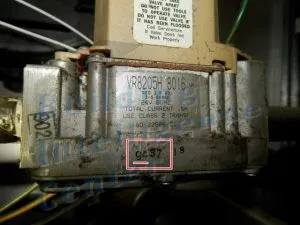
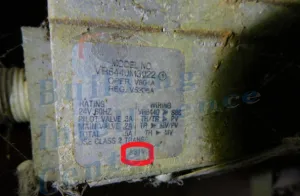
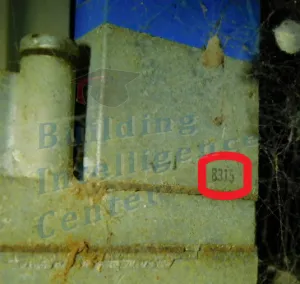
Mixed or Manufactured (Coal) Gas
Manufactured (Coal) Gas was last produced in the mid 1960'sBefore Natural Gas was widely available, Mixed or Manufactured gas was produced or manufactured primarily from coal in factories known as "Manufactured Gas Plants". Manufactured gas production began in the 1800's. The last of these U.S. plants on a community supply scale ceased operation in 1966, though some plants supplying specific industrial needs remained in operation far longer.
Many older combustion appliances such as furnaces and boilers were designed for use with mixed or manufactured (MFD) gas. If such an appliance is still in operation, the data plate label will state something to the effect "For Use With MFD Gas" , "For MFD Gas", "NAT & MXD", or "For Use With Mixed Gas". If you find such a listing on the data plate, you can be assured the unit predates 1966.


Postal Zones & ZIP Codes
Postal Zones and ZIP Codes may help you determine an era of manufacture2 digit Postal Zones were introduced in 1943 for primarily the major urban or large metro areas across the U.S.
Before 1943, only the city name was used. With increased demand on mail delivery services, postal zones became necessary. Philadelphia was postal zone 7 (07), and Indianapolis was postal zone 17, and East Cleveland was postal zone 12 for examples. These zones were widely adopted and some manufacturers included their postal zone on the name plate or data plate.
5-digit ZIP codes replaced the outdated postal zones in 1963.
9-digit ZIP codes were introduced in 1983.
If the data plate or name plate bears a 2-digit postal code, the era of manufacture was between 1943 and 1963.
State Abbreviations
Abbreviations of State or Territory may help you determine an era of manufactureCommon Postal Abbreviations for states and territories have been in existence since 1831.
Prior to 1963, a variety of "standard" abbreviations were used; however the USPS preferred customers to write out the full length state name to avoid potential confusion ("MI" or "Mi" for Mississippi or Michigan for example). With the introduction of 5-digit ZIP codes in 1963, most addressing equipment could only accommodate 23 characters (including spaces) in the bottom line of the address field. To make room for the new ZIP Code, state names needed to be abbreviated with some uniformity. The USPS provided an initial list of abbreviations in June 1963, but many still had three or four letters, which remained too long. In October 1963, the USPS settled on the current two-letter abbreviations we have all become accustomed to; however, this change was not instantaneous (most of the public being averse to change), and many were slow to adopt the 2-letter postal abbreviations. The new abbreviations were not enforced or required, and the older multi-letter standard abbreviations remained in use for some time after 1963. It is believed (but not confirmed) that the 2-letter USPS abbreviations were not enforced or fully adopted by the public until 1983 when the 9-digit ZIP-4 postal code system was introduced.
Manufacturers often included the city and state of the parent company on the data plate. If the data plate or name plate bears a state or territory "standard" abbreviation of more than 2 letters or deviates from the modern 2-letter postal abbreviations (both capital letters without a period such as "IN" and not "In." or "Ind."), the era of manufacture potentially predates mid to late 1960's and 70's.
While this is certainly not a definitive method to determine the age of a system, it can prove useful to estimate a potential era or decade of manufacture especially if combined with other clues or observations.
Blower Door Safety Switch
First blower door safety switch introduced in mid-1970'sThe first blower door safety (cut-out) switch for forced air combustion furnaces was introduced in the mid to late 1970's (we believe Carrier was the first circa 1976). Other manufactures followed suit shortly thereafter, and it very quickly became a required safety device on all forced air combustion furnaces. The cut-out safety switch shuts down the blower motor when the service compartment is opened in order to reduce potential injury from the blower fan. It also reduces the chance of combustion gases being drawn back into the supply air and distributed throughout the structure when the service compartment is opened; however, many technicians often bypass the switch (with tape or other means) when diagnosing or servicing the system, and fail or forget to restore it to normal (safe) operating condition. This switch should always remain in safe working condition.
If the furnace was not originally equipped with a blower compartment door safety switch, it likely predates 1976 to early 1980's.
